By healthiergang writer Valentina Ottaviani, fitness instructor and sports, wellness and fashion journalist.
How to Firm Your Arms?
Having toned arms is a bit of the worry and desire of men and women, but it is not always easy to shape this part of the body as it is necessary strong dedication and perseverance to achieve the desired goals. An example is the internal muscles of the arms, which, if not continuously stimulated with the passing of age, have a tendency to relax, losing muscle tone and strength, manifesting that unsightly "bat wing".
To obtain important results during training, one cannot ignore the combination of physical activity and balanced nutrition. In fact, to achieve long-lasting results over time, it is necessary to start from healthy eating, the first starting point and guarantee of maximum performance. If the "conditio sine qua non" valid for everyone, in order to reach a condition of good health, is that of a rational diet, for a sportsman it must be a rule of life.
Yes, because the athlete can reach the optimum from his performance, only and only through a rigorous and complete dietary conduct. To this must be added, for a perfect balance, the training-recovery combination.
Training, as a stressful agent, causes the organism to react with a stimulation of the cells to this shock a recovery phase must necessarily follow, short between one exercise and another, medium between one workout and another, which aims to restore the psycho-physical energy pool and the elimination of toxins accumulated during fatigue.
Nutrition then comes into play, understood as the supply of all the nutritional principles capable of providing the energy necessary to perform all the vital functions and renew the structures of the organism that are worn out over time and that must necessarily be replaced. For example, when training the bicep while doing a barbell curl, the muscle is provoked by contracting the sliding of the fibers on each other with internal friction.
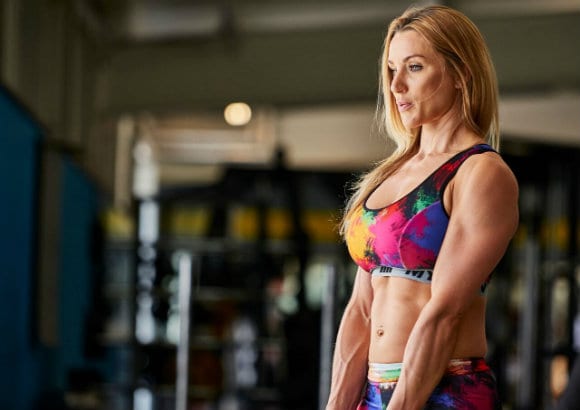
These will be greater the more the muscle has been increased in mass, consequently there will be production of heat and necrosis of muscle cells. The organism at this point reacts by producing a super compensating effect thus generating more cells than dead ones by making use of the building material ingested with food, carrying out this process under the pressure of hormones produced during recovery. Thus occurs what is called anabolysis, or the constructive metabolic process that induces the formation of new tissue.
In fact, it often happens, after exhausting sessions in the gym, and without adequate physiological recovery, that the arms do not increase by one millimeter of muscle mass or do not tone at all, not achieving the desired result or the one obtained is not very satisfactory. The main purpose of a good workout is to produce consistent results. In order for a weight session to be considered effective and profitable from a muscular point of view, it is essential that the subject is in a position to take full advantage of the effort that the training requires, otherwise it will have been a useless waste of time, also obtaining negative effects. such as discomfort, muscle regression, joint pain.
The negative factors that affect the performance of a workout are therefore various. From the wrong diet in qualitative and quantitative terms, toabsence of good recovery and a bad training session.
In order for our fitness session not to be completely in vain it is first of all necessary to know the anatomy of the upper limbs and his muscles, to understand which ones are involved and which are the correct exercises to perform.
Anatomy Of The Arms
The skeletal scaffold of the upper limb consists of shoulder, arm and forearm.
The shoulder anatomy is particularly complex and encompassing clavicle, scapula, humerus and a whole series of ligaments, muscles, such as the deltoid for example, and tendons that join them. This joint complex allows for many types of movement, flexion-extension, abduction-adduction, internal-external rotation and circumduction.
As for the anatomical structure of the arm, this is characterized by the humerus, the long even bone, which articulates at the top with the scapula and at the bottom, in the forearm, with the radius and the ulna, finally in the hand there are carpus, metacarpus and phalanges. The humerus participates in the formation of 2 important joints of the upper limb, that of the shoulder and that of the elbow with ulna and radius.
For the muscles of the arm these are divided into two loggias, the front one and the rear one. In the anterior loggia we find the flexor muscles of the forearm on the arm and these are the:
? The brachial biceps formed by two heads, the long one originates in the supraglenoid tuberosity of the scapula, while the short one in the coracoid process of the same. The brachial biceps inserts into a tendon common to the radius tuberosity where it spirals. Being a bi-articular muscle, the function of the biceps is complex. At the shoulder joint, the long head of the biceps, together with the supraspinatus and deltoid, abducts the arm, while the short head adds it. The simultaneous contraction of the two heads lifts it in synergy with the deltoid. On the elbow joint the biceps flexes the forearm over the arm and the supine, i.e. the limb is rotated outward.
? The anterior branchial, placed under the biceps it originates from the anterolateral and anteromedial faces of the shaft of the humerus, inserting itself under the insertion of the deltoid, moving downwards it inserts into the tuberosity of the ulna. It flexes the forearm on the upper arm and rotates it laterally and medially.
? The coracobrachialis it originates in the coracoid process of the scapula and inserts on the anteromedial face of the humerus. It acts only on the shoulder joint and has the function of flexing, adducting the arm.
? The brachioradialis it originates in the lateral margin of the humerus and is inserted into the styloid process of the radius, flexes the forearm on the arm, rotates the radius and is able, with the elbow flexed, to perform both pronation and supination movements.
In the posterior loggia we find instead the extensor muscles or those responsible for the extension of the forearm such as the brachial triceps and anconeus.
? The brachial triceps it consists of three heads, long, lateral and medial. At the bottom, the three heads are attached to the oleocrano of the ulna, joining in a single tendon. Its main function, being the only antagonist of the arm flexors, is to extend the forearm and thanks to the bi-articular nature of the long head, the only one acting on two different joints, it allows the adduction of the previously abducted arm.
? The anconeus it is a small posterior muscle of the forearm and its function is to protect the joint capsule of the elbow and extend the forearm, abducts the ulna and stabilizes it.
The brachial biceps and triceps act both at the shoulder joint and the elbow joint, while the brachialis and anconeus act only on the elbow while the coracobrachialis is activated only on the shoulder. As for the forearm muscles, there are 19 of them and they are divided into anterior, posterior and lateral muscles.
7 Exercises You Should Know
After an anatomical excursus, to understand which muscles we are going to work let's see a series of important exercises to tone the arm muscles.
Those who think that to have tough and voluminous arms it is enough to train only the biceps is sensationally wrong. In fact, the dimensions of the arm are not actually given by the biceps, but, for the most part, by the triceps and only by fully training both muscles will you have aesthetically visible results.
Being 2 antagonist muscles, which produce contrary movements, training only one is counterproductive for the development of the same. A good training plan provides equal importance between the two muscle groups and therefore an identical workload.
The muscles of the arms work in an important way during exercises with high muscular synergy in which they intervene as synergists or stabilizers.
Let's take some examples: during the barbell presses on a flat bench to train the chest, the arm makes a pushing movement and consequently works the triceps, as also happens while we push upwards with a barbell or dumbbells to train the deltoids.
When performing exercises for the lats, such as pull-ups, barbell or dumbbell rowing and lat machine, the arm makes a pulling movement and here the bicep muscle exerts a lot of effort.
Having said that here 7 exercises (3 for the biceps and 4 for the triceps) to dedicate a specific workout to these two muscle groups: biceps and triceps.
Biceps
# 1 Alternate curls with dumbbells with hammer grip or with forearm rotation
Standing, legs slightly bent, start the movement with the dumbbells at your sides, neutral grip. At this point, flex your arm, first one then the other, concentrating on activating the biceps. Elbows and bust firm, the work must come directly from them. To accentuate the involvement and shortening of the muscle you can go to supinate it, finishing with the palms upwards.
#2 Barbell or dumbbell curl on the Scott bench
This exercise involves the use of the Scott bench. You can use the dumbbells or the barbell (the shaped one allows less stress on the wrist joint). There Scott bench, compared to the traditional curl, it allows to maintain tension even in the first part of the movement (muscle in maximum stretch). This will allow a variation of the stimulus.
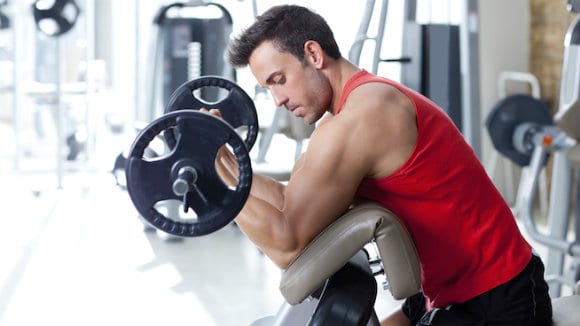
The anteposition of the arm (flexed) brings the muscle to a greater shortening, this can be exploited using the cable (scott or inclined bench in front of the low cable) to maintain tension even in the last stretch of the ROM.
# 3 Low cable curls or tight, reverse grip pull-ups
The Low Cable Curl is a great exercise to better manage tension throughout the ROM. In the initial part of the movement (arms extended) you can stay closer to the pulley. Instead, moving away (given the effort of the lumbar section to keep the torso straight) you can accentuate the tension in the last section of the movement (arm flexed, bent).
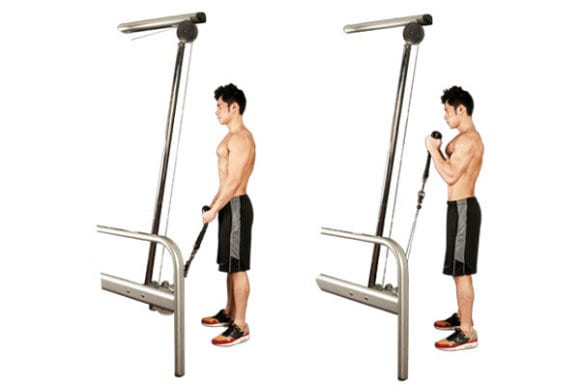
As a variant you can use the handle working one arm at a time. You can also perform the exercise prone on an inclined bench (chest on the bench) placed in front of the pulley, working with the shoulders flexed and, therefore, bringing the biceps into a position of greater shortening.
Triceps
# 1 Close Grip Barbell Flat Bench Press
Lie supine (on your back) on the flat bench, arched back and adducted shoulder blades. Hold the bar with a tight grip, i.e. shoulder-width apart or slightly tighter with your legs flat on the ground. From the deadlift of the barbell go down with the elbows tight until they touch the sides of the torso.
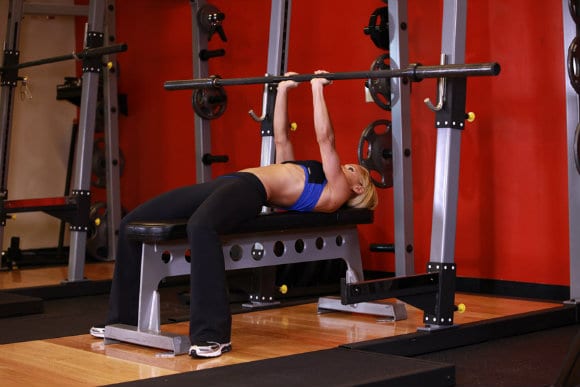
The barbell must reach under the pectoral, and then rise up keeping the forearm in a perpendicular line to the ground by contracting the triceps. The wrists remain in line with the forearm.
# 2 Parallel arm pushups or bench dips
The dips are a very interesting exercise for the triceps. They can be performed at the parallels (keeping the torso straight avoids involvement of the chest) or on the bench (hands placed on the bench placed behind the torso, feet placed on a bench placed in front of you).
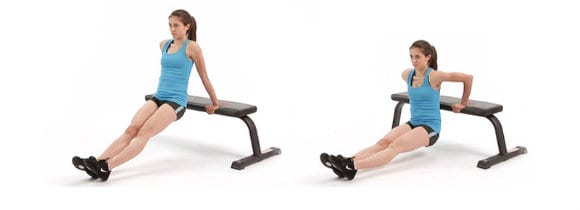
In both cases (but especially in this second variant) we will have a strong joint stress (at the glenohumeral level) it is therefore advisable to evaluate your mobility first.
# 3 Pushdown for triceps
Exercise to be performed on the high cable. It can be done with rope (allows you to achieve a greater shortening) or with the bar. Here too, as in the cable curl, we can work with the pulley distance to impose a greater emphasis in certain sections of the ROM.
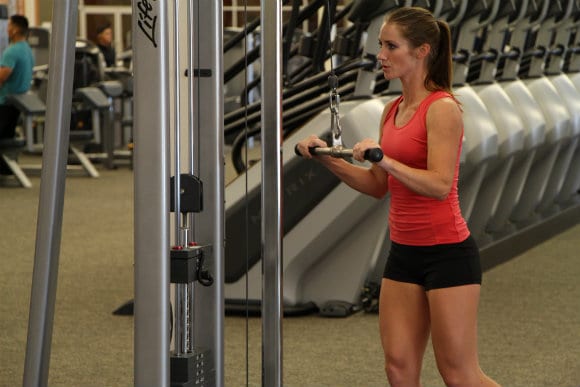
Thus, being more distant, we will be able to maintain a strong tension in the last part of the movement (maximum shortening), while staying closer, we will work by giving emphasis in the medial part of the ROM.
# 4 French Press with barbell or dumbbells
Lie on your back on the flat bench and hold the EZ bar (the wavy one), take it with a tight grip using the first corners of the bar, keeping your elbows firm and tight pointing upwards. With your back firmly on the bench, let your forearms and the barbell descend slowly and controlled above your head or until it touches your forehead, then push it back upwards by extending your arms almost completely.
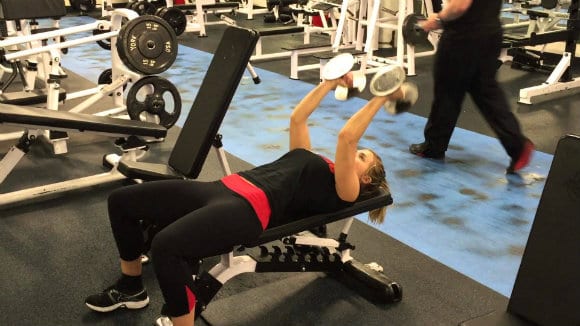
In the execution of the French Press with dumbbells the starting position is the same as the one above. I hold the dumbbells and with outstretched arms up I flex my forearms at 90 ° back bringing the dumbbells towards the head and then extend them again. In this exercise, all the heads of the brachial triceps and the anconeus are involved.
Conclusions
To obtain significant results, we remind you that it is good to choose an adequate workload that allows you to get to the last repetitions of each series until reaching the muscle failure, or rather to get to the end with difficulty. It is also good, when you feel ready, to increase the loads as the strength increases to stimulate the muscles well and not to remain in a stall phase. At the beginning of the training of the arms it is essential to always carry out warm-up exercises and at the end stretching exercises to stretch the muscles subjected to stress.


























